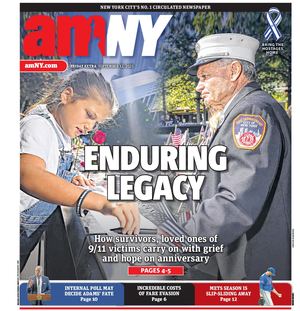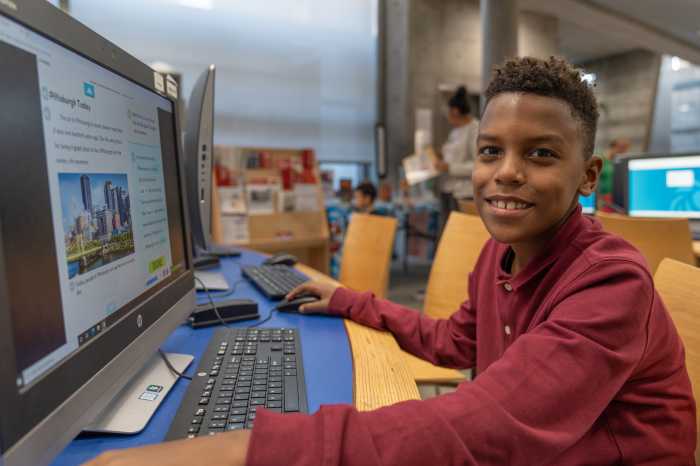
Watch “This Is Home” and you’ll be sitting on a living room couch with four children, Syrian refugees, who worry if Americans will accept or fear them; you’ll be chatting with a teen who fears deportation will tear her family apart.
The documentary, to be released on Epix June 22, drops you in the middle of the emotional journey to self-sufficiency four refugee families experience during their initial months in the United States.
“There’s something about trying to understand what it’s like to be an outsider and find yourself in new circumstances,” says director Alexandra Shiva, a Manhattan resident. “What people don’t necessarily realize is that these people didn’t want to leave [their homes]. They didn’t choose to leave … And if they could go home, they would.”
The New Yorker and her film crew set out in 2016 to show the true experience of a refugee, from struggling to understand new customs to learning a new language and decoding President Donald Trump’s January 2017 travel ban announcement.
“We spent close to a year following the four Syrian refugee families. I think what we learned most was this is the beginning of a new chapter for them, but the struggle didn’t end when they arrived,” explains Shiva, 45, whose previous film credits include the 2015 Peabody winner “How to Dance in Ohio.”
Her cameras get up close and personal in the film while shadowing families who reach for their footings with the help of the Baltimore branch of the International Rescue Committee (IRC), a nonprofit social services organization with its main headquarters based in New York City.
The community assistance program gives refugee families eight months to resettle, learn English, find a job and home. The IRC says it helped more than 10,000 refugees and special immigrant visa recipients in 2017.
Though political by nature, Shiva says her documentary feature wasn’t created to stir up polarizing conversation. Instead, she looks to give a face to the faceless by putting viewers — no matter their political opinions — in the center of the most personal of moments these families endure.
Notable scenes include sitting down with a teen who suffers from PTSD after living in Syria, following kids to their first days at school in Baltimore and shadowing the wives as they learn to take on new responsibilities, like driving and finding employment.
“Hopefully, you’re seeing these situations through their eyes,” she says. “It was very important that it be an intimate, human connection and not something that tells you how to feel.”
At the end of their eight-month assistance program, the IRC cuts ties with the families — whether they’ve adapted to their new homes or not.
“I definitely feel like I became very close to the families. I love them and I feel very connected to them,” Shiva says. “I had to get very, very close and I still am in regular contact with everybody.”
Shiva sat down with amNewYork to reflect on the struggles and triumphs presented in her documentary.
“This Is Home” first premiered at the Sundance Film Festival in January.
When you parted ways with these families at the end of the eight months, did you feel they acclimated?
At the end of the eight months, I felt that the families were going to be okay, but not yet. It takes a lot longer than that. We actually did film for a year, so we filmed past the eight-month mark. I think if I moved to Baltimore from New York City, it might take me a few years to acclimate … I think that the children in many ways are the ones that will make it okay. Now, when I call, the older children will call me back and they’re speaking English.
What would you say was the root of the biggest culture shock for them?
It’s funny, we asked them, “What is the strangest thing that you experienced here?” Sometimes the answers were that people have animals in their house. That was a really interesting one. There was another that people don’t eat food that’s offered to them. I think one thing that was culturally in a small way significant for people was the idea that they had to shake hands. That wasn’t something that they were doing, you know, men are not shaking hands with women. Women are not shaking hands with men. I think that was a strange one.
Of all the highs and lows you saw the families through, what about them surprised you the most?
The humor that we filmed was so surprising to me. The fact that they used humor for resilience. It was very important in translating the film to the world because I think that it does allow a way in; it’s where we were very careful in edit to focus on our commonality and our similarities, not our differences.
You said their struggles didn’t end here. Would you consider revisiting their stories?
I could see in five years a really interesting film once they have citizenship of doing a film, a follow-up, to see where they are. I think it’s a classic immigration story in many, many ways. You know, the parents are not the ones that acclimate, the children do it and then they help the parents along.





































